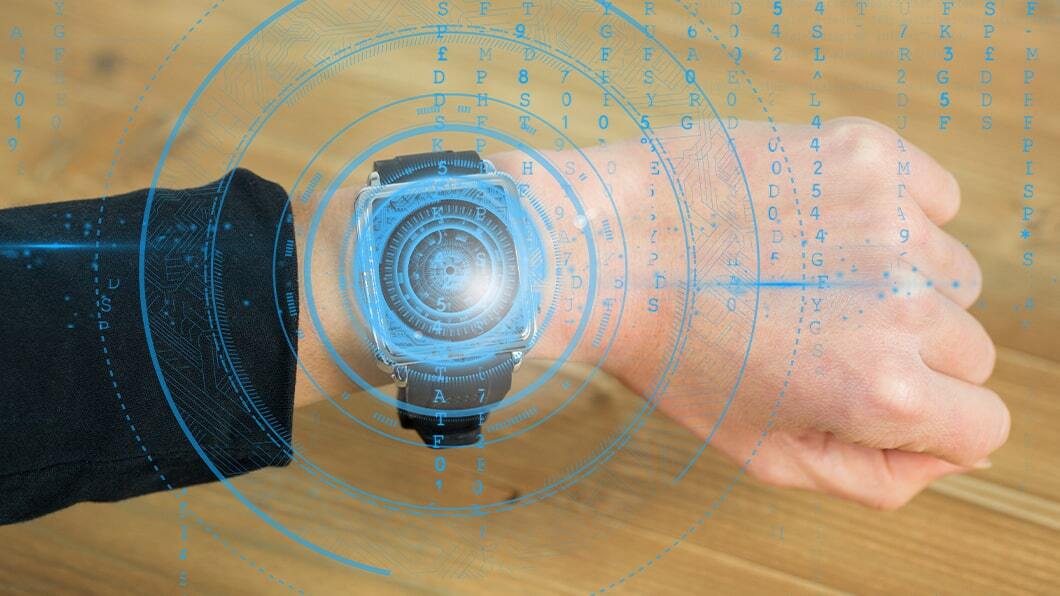
Biometric Authentication and its Role in Security
Biometric authentication has emerged as a powerful and secure method of verifying individuals’ identities. In this digital age, where security breaches and identity theft are significant concerns, traditional methods of authentication such as passwords and PINs are no longer sufficient. Biometric authentication, on the other hand, offers a more reliable and convenient way to ensure the security of personal information and sensitive data. In this article, we will explore the concept of biometric authentication, its various types, how it works, its advantages and limitations, its applications in different sectors, and future trends in the field.
What is Biometric Authentication?
Biometric authentication is a technology that uses unique physical or behavioral traits of individuals to verify their identities. It leverages the inherent characteristics of individuals, such as fingerprints, iris patterns, facial features, voice patterns, or palmprints, to authenticate their access to systems, devices, or services. Unlike traditional authentication methods that rely on something the user knows (e.g., passwords) or possesses (e.g., access cards), biometric authentication provides a more robust and accurate means of identification.
Types of Biometric Authentication

Fingerprint Recognition: Fingerprint recognition is one of the most widely used biometric authentication methods. It analyzes the unique ridges, whorls, and minutiae points present in an individual’s fingerprints to create a unique identifier for that person. Fingerprint recognition systems are commonly found in smartphones, laptops, and physical access control systems.
Iris Recognition: Iris recognition relies on capturing the intricate patterns of the iris, which is the colored part of the eye. The patterns are unique to each individual and can be captured using specialized cameras. Iris recognition is highly accurate and is used in various applications, including border control and national ID programs.
Facial Recognition: Facial recognition technology analyzes the unique facial features of individuals to verify their identities. It captures and analyzes facial characteristics such as the distance between the eyes, nose shape, and jawline structure. Facial recognition is used in security systems, social media platforms, and mobile devices for authentication purposes.
Voice Recognition: Voice recognition involves analyzing the vocal characteristics of individuals, including their pitch, tone, and speech patterns, to identify and authenticate them. Voice recognition systems are commonly used in call centers, voice assistants, and telephone banking services.
Palmprint Recognition: Palmprint recognition utilizes the unique patterns and features present in an individual’s palm to establish their identity. It captures and analyzes the lines, ridges, and creases on the palm to create a unique palmprint template. Palmprint recognition is used in physical access control systems and forensic investigations.
How Biometric Authentication Works

Biometric authentication involves several steps to verify an individual’s identity accurately.
- Enrollment: During the enrollment process, the individual’s biometric data is captured and stored securely in a database. This data serves as a reference for future authentication. For example, in fingerprint recognition, the person’s fingerprints are scanned and stored as a template.
- Feature Extraction: In this step, the system analyzes the captured biometric data and extracts the unique features or characteristics that distinguish one individual from another. These features are then converted into a mathematical representation or template.
- Template Creation: The extracted features are used to create a biometric template, which is a digital representation of the individual’s biometric data. The template is securely stored in a database and used for future comparison.
- Comparison and Authentication: When a user attempts to authenticate using biometric authentication, their biometric data is captured again. The newly captured data is processed and compared with the stored template. If the extracted features from the new data match the features in the template within an acceptable threshold, authentication is successful, and access is granted.
Advantages of Biometric Authentication

Biometric authentication offers several advantages over traditional authentication methods.
Increased Security: Biometric authentication provides a higher level of security compared to passwords or PINs, which can be easily forgotten, stolen, or hacked. Biometric traits are unique to each individual and difficult to replicate, making it more challenging for unauthorized users to gain access.
Convenience and User Experience: Unlike passwords or PINs that require memorization and manual input, biometric authentication is convenient and user-friendly. Users simply need to present their biometric traits, such as a fingerprint or face, which eliminates the need to remember complex passwords.
Non-repudiation: Biometric authentication provides non-repudiation, meaning that once an individual’s biometric trait is linked to a particular action or transaction, they cannot deny their involvement. This feature is particularly important in legal and financial contexts.
- Scalability: Biometric authentication can be easily scaled to accommodate large user populations. Whether it is used in an organization with thousands of employees or a public transportation system with millions of passengers, biometric systems can efficiently handle the authentication process.
Challenges and Limitations of Biometric Authentication

While biometric authentication offers significant advantages, it also faces some challenges and limitations.
- False Acceptance Rate (FAR): False Acceptance Rate (FAR) refers to the likelihood of an unauthorized individual being incorrectly identified and granted access. Biometric systems aim to keep FAR as low as possible to prevent security breaches.
- False Rejection Rate (FRR): False Rejection Rate (FRR) measures the probability of a valid user being incorrectly denied access. High FRR can lead to frustration and inconvenience for users.
- Privacy Concerns: Biometric data is highly personal and sensitive. Privacy concerns arise when individuals worry about how their biometric information is stored, used, and potentially shared with third parties. Proper data protection measures and transparency are crucial to address these concerns.
- Spoofing and Presentation Attacks: Sophisticated attackers may attempt to spoof or present fake biometric traits to deceive the system. This can include using high-quality replicas of fingerprints or facial masks to trick the authentication process. Biometric systems need robust anti-spoofing measures to counter such attacks.
Biometric Authentication in Different Sectors
Biometric authentication has found widespread application in various sectors due to its enhanced security and convenience.
- Government and Law Enforcement: Government agencies and law enforcement organizations utilize biometric authentication for identity verification and access control. Biometric data such as fingerprints and facial features are used in national identification systems, border control, and criminal investigations.
- Banking and Financial Services: The banking and financial services industry has adopted biometric authentication to enhance security and combat fraud. Biometric methods like fingerprint recognition and voice recognition are employed in ATM machines, mobile banking apps, and payment systems to ensure secure access to accounts and transactions.
- Healthcare: In the healthcare sector, biometric authentication plays a vital role in securing patient information and enabling accurate identification. Biometric systems are used to control access to electronic medical records, restrict unauthorized entry to restricted areas, and prevent medical identity theft.
- Transportation and Travel: Biometric authentication is increasingly utilized in transportation and travel industries for streamlined passenger identification and enhanced security. Airports, for example, employ biometric systems for passenger check-in, boarding processes, and border control, enabling efficient and secure travel experiences.
- Mobile Devices and Smartphones: Smartphones and mobile devices have integrated biometric authentication features, such as fingerprint sensors and facial recognition technology. Biometric methods provide a convenient and secure way to unlock devices, authorize app installations, and authenticate mobile payments.
Future Trends in Biometric Authentication
As technology continues to advance, several exciting trends are shaping the future of biometric authentication.
- Multi-Modal Biometrics: Multi-modal biometrics combine multiple biometric traits for enhanced security and accuracy. By utilizing a combination of fingerprints, iris patterns, and facial features, multi-modal systems offer robust authentication methods that are more resistant to spoofing attacks.
- Continuous Authentication: Continuous authentication aims to provide real-time verification throughout a user’s interaction with a system or device. This approach monitors biometric traits continuously to ensure that the authorized user remains authenticated and automatically triggers re-authentication if anomalies are detected.
- Biometric Encryption: Biometric encryption involves encrypting biometric data before it is stored or transmitted. This technique adds an extra layer of security, ensuring that even if the encrypted data is compromised, it remains unreadable without the decryption key.
Blockchain Integration: Integrating biometric authentication with blockchain technology offers increased transparency, immutability, and security. Blockchain can provide tamper-proof storage and verification of biometric templates, reducing the reliance on centralized authentication systems.
Conclusion
Biometric authentication has revolutionized the field of security by providing a reliable and user-friendly method of verifying individuals’ identities. With its unique advantages, such as increased security, convenience, and scalability, biometric authentication is widely adopted in various sectors, including government, banking, healthcare, transportation, and mobile devices. Despite challenges like false acceptance and rejection rates, privacy concerns, and spoofing attacks, ongoing advancements in multi-modal biometrics, continuous authentication, biometric encryption, and blockchain integration promise a future where biometric authentication continues to evolve and safeguard our digital interactions.
FAQs
1. Is biometric authentication more secure than traditional methods?
Yes, biometric authentication offers a higher level of security as it relies on unique physical or behavioral traits that are difficult to replicate or steal.
2. Can biometric authentication be fooled by identical twins?
Biometric systems are designed to capture subtle differences even among identical twins, making it highly unlikely for them to bypass authentication.
3. What happens if I lose my biometric data?
Biometric data is typically stored in encrypted form, making it difficult for anyone to access or use the data without the necessary encryption keys.
4. Are biometric authentication systems foolproof?
While biometric authentication provides a strong level of security, no system is entirely foolproof. However, biometric authentication systems employ various anti-spoofing techniques to minimize the risk of fraudulent attacks.
5. Can biometric authentication be used for access control in organizations?
Absolutely. Biometric authentication is widely used for access control in organizations, providing a secure and efficient means of managing employee access to premises, sensitive areas, and digital resources.














